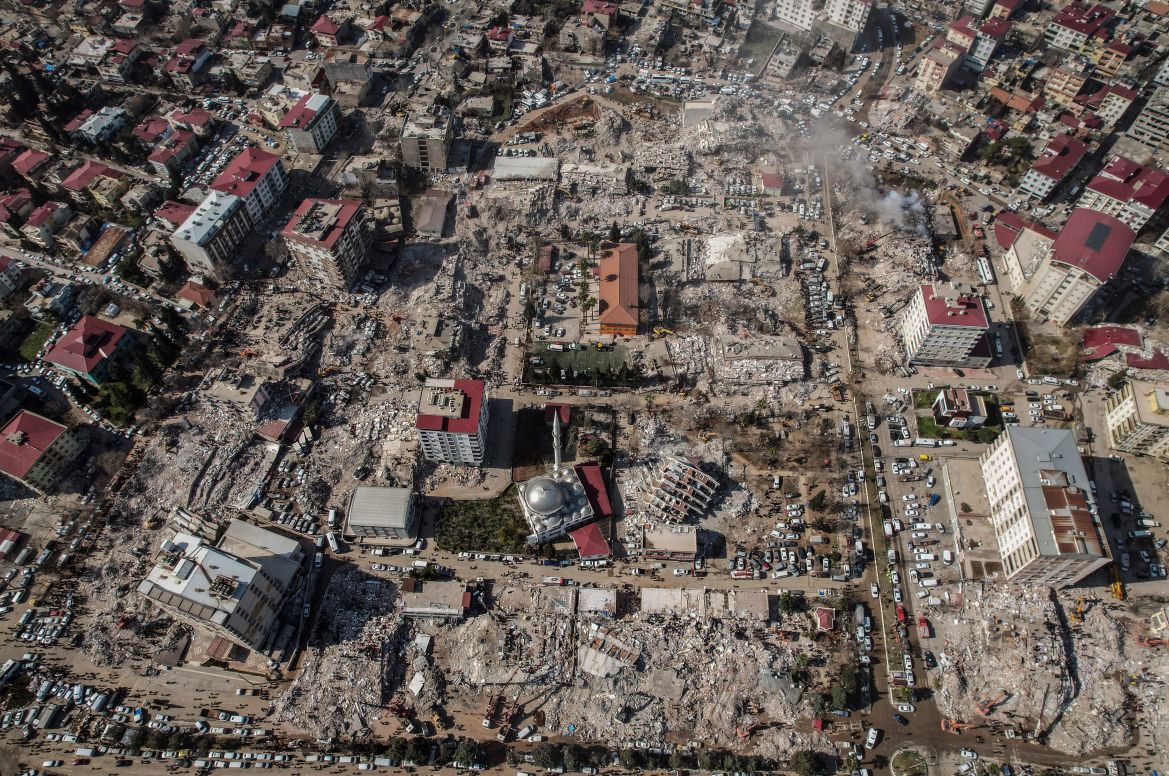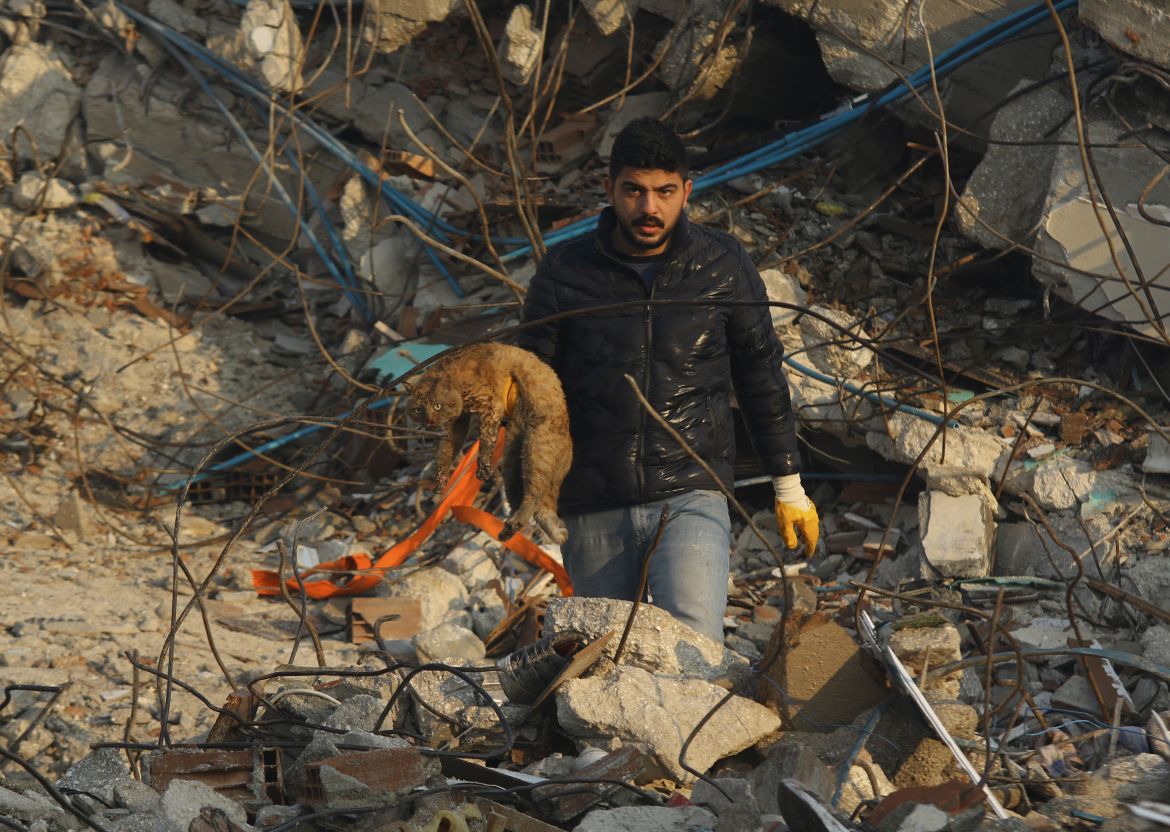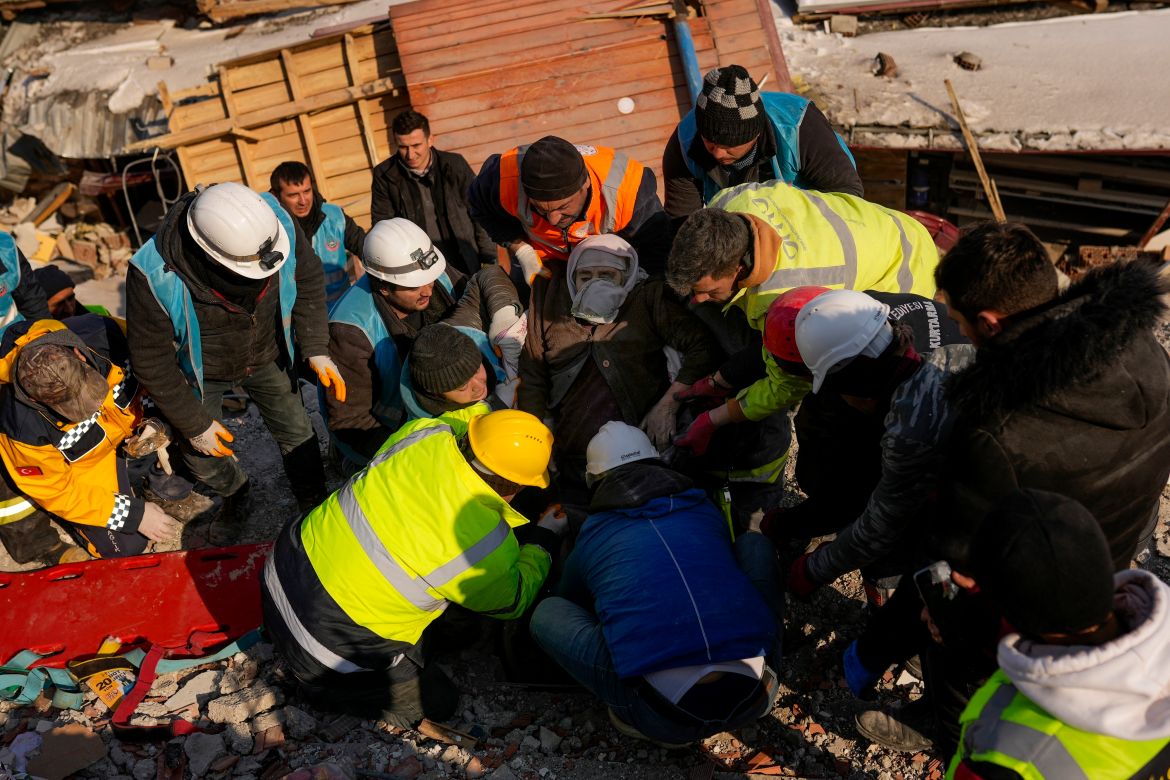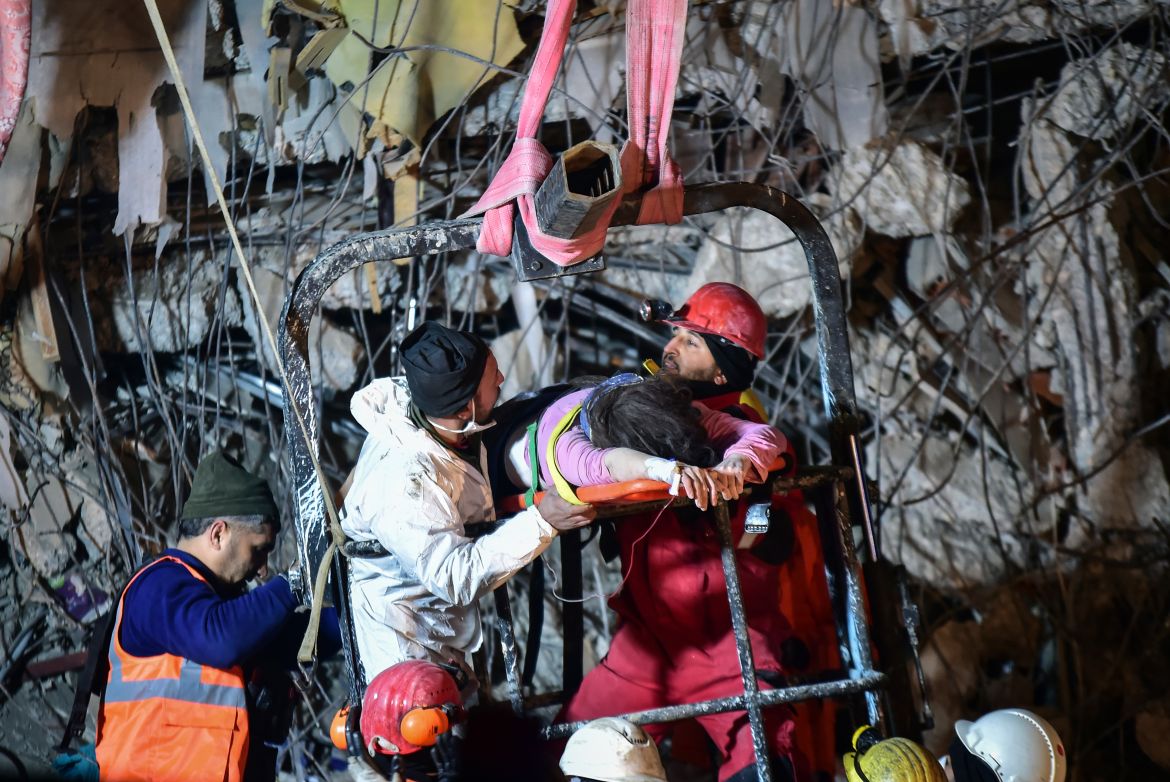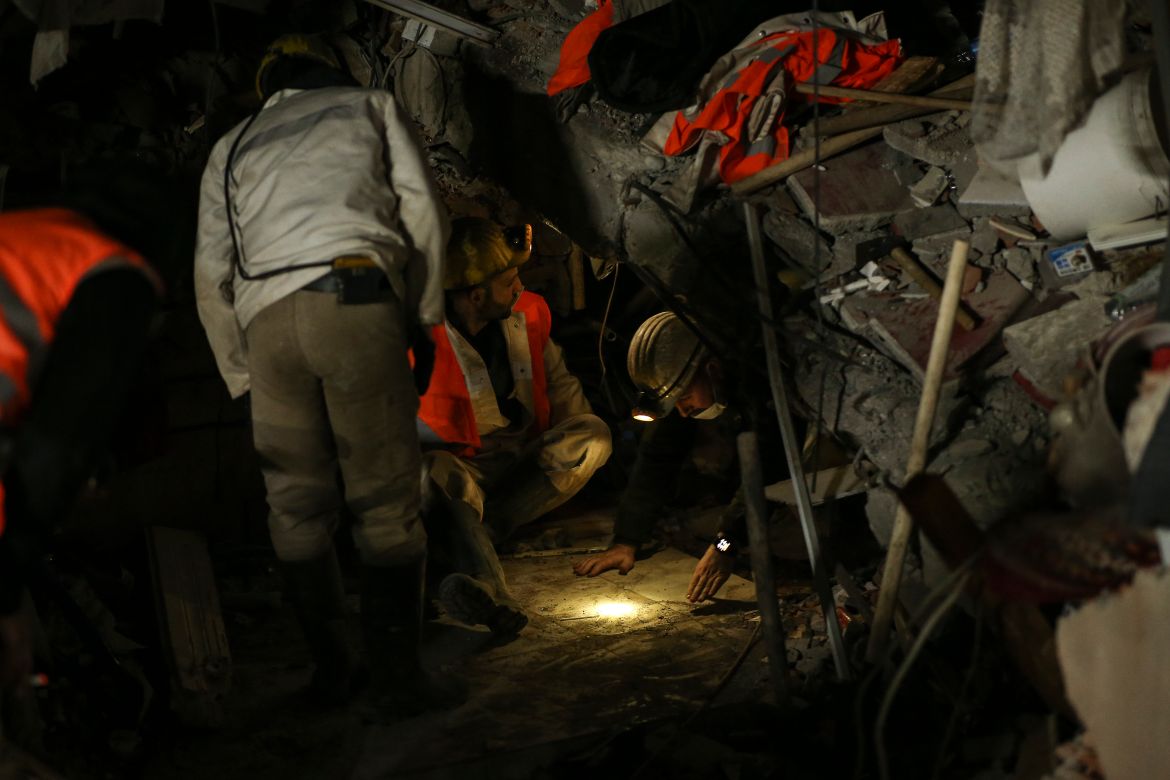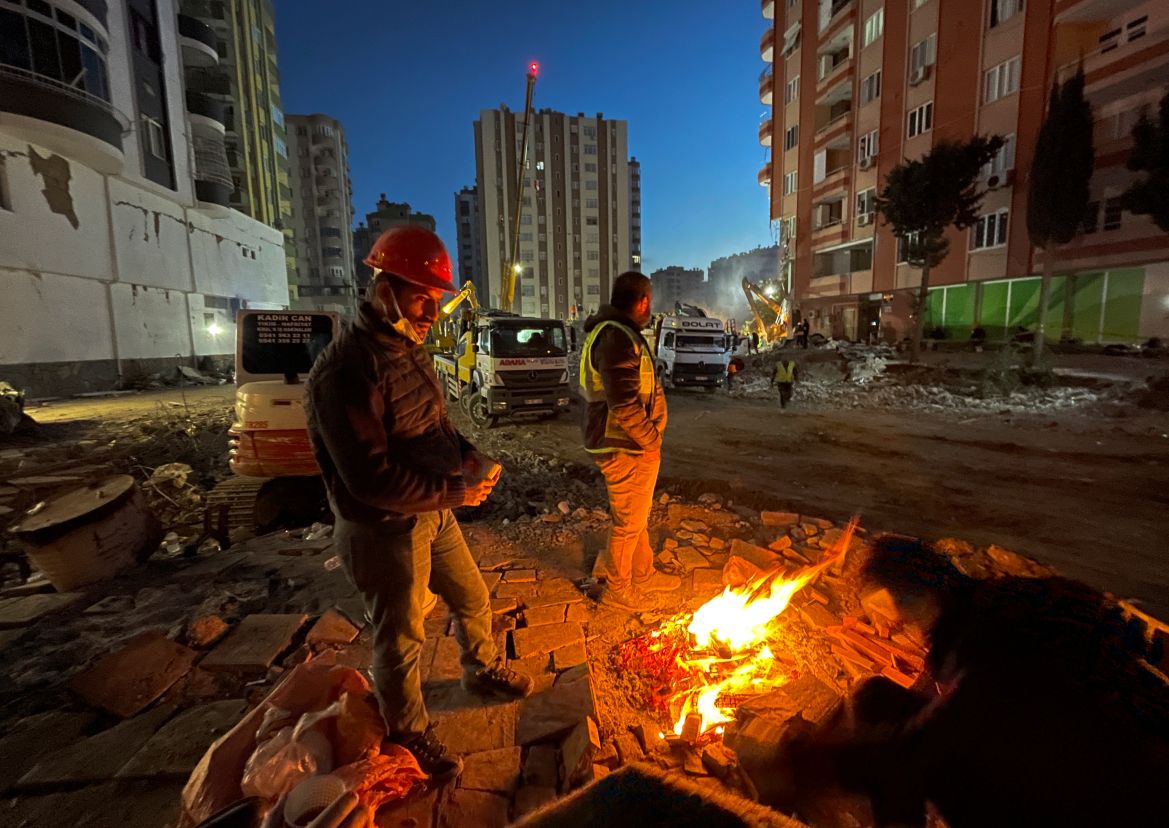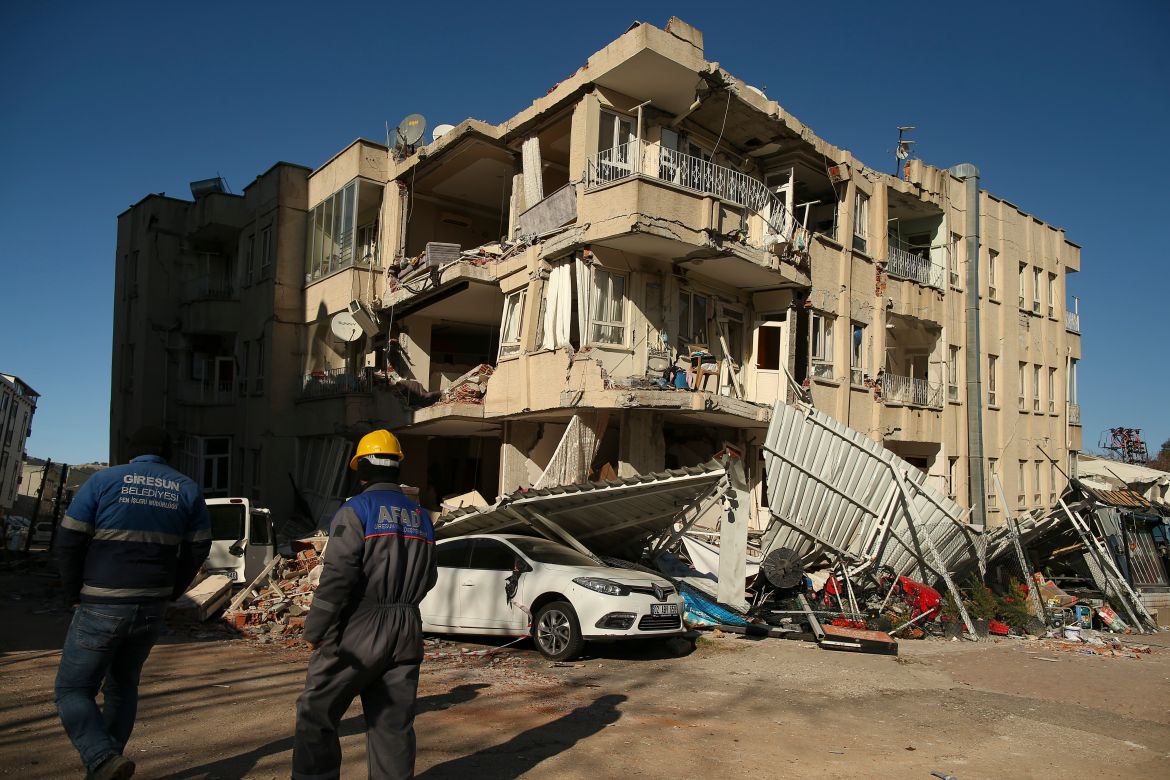In Pictures
Death toll rises, rescues dwindle in earthquake aftermath
Dramatic rescue belies the reality that the chances of finding many more survivors are shrinking fast, four days after catastrophic earthquakes.

A teenager was pulled largely unscathed from beneath the rubble of a collapsed building in the Turkish city of Gaziantep early on Friday, in a dramatic rescue that belied the reality that the chances of finding many more survivors are shrinking fast, four days after catastrophic earthquakes killed more than 21,000 people.
The first of those temblors, of magnitude 7.8, hit the border region between Turkey and Syria, an area home to more than 13.5 million people. Bodies lay wrapped in blankets, rugs and tarps in the streets of some cities, with morgues and cemeteries overwhelmed.
Before dawn in Gaziantep on Friday, near the epicentre of the earthquake, rescuers pulled Adnan Muhammed Korkut from the basement where he had been trapped since the temblor struck on Monday. The 17-year-old beamed a smile at the crowd of friends and relatives who chanted “Adnan, Adnan,” clapping and crying tears of joy as he was carried out and put onto a stretcher.
“Thank God you arrived,” he said, embracing his mother and others who leaned down to kiss and hug him as he was being loaded into an ambulance. “Thank you everyone.”
Trapped for 94 hours, but not crushed, the teenager said he had been forced to drink his own urine to slake his thirst. “I was able to survive that way,” he said.
The death toll from the earthquake has eclipsed the estimated 18,400 people who died in the 2011 earthquake off Fukushima, Japan, that triggered a tsunami and the estimated 18,000 people who died in a temblor near the Turkish capital, Istanbul, in 1999.
The new figure, which is certain to rise, included more than 18,300 people in Turkey and more than 3,300 in civil war-torn Syria. Tens of thousands were also injured and many tens of thousands have been left homeless.
Even though experts say trapped people could survive for a week or more, the chances of finding survivors in the freezing temperatures are dimming. As emergency crews and panicked relatives dug through the rubble, and occasionally found people alive, the focus began to shift to demolishing dangerously unstable structures.
In northwestern Syria, the first UN aid trucks since the quake to enter the rebel-controlled area from Turkey arrived on Thursday, underscoring the difficulty of getting help to people there.
In the Turkish city of Antakya, dozens scrambled for aid in front of a truck distributing children’s coats and other supplies. One survivor, Ahmet Tokgoz, called for the government to evacuate people from the region. Many of those who have lost their homes found shelter in tents, stadiums and other temporary accommodation, but others have slept outdoors.
The winter weather and damage to roads and airports have hampered the response. Some in Turkey have complained that the government was slow to respond. President Recep Tayyip Erdogan, who faces re-election in May, has been visiting affected cities over the last two days.
Turkey’s disaster management agency said more than 110,000 rescue personnel were now taking part in the effort and at least 5,500 vehicles, including tractors, cranes, bulldozers and excavators had been shipped. The foreign ministry said 95 countries have offered help.
